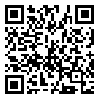Volume 58, Issue 2 (7 2000)
Tehran Univ Med J 2000, 58(2): 31-34 |
Back to browse issues page
Download citation:
BibTeX | RIS | EndNote | Medlars | ProCite | Reference Manager | RefWorks
Send citation to:



BibTeX | RIS | EndNote | Medlars | ProCite | Reference Manager | RefWorks
Send citation to:
Hashemi SH, Khanlari M, Mamishy Zh. Comparative study of cycloplegic drugs in clinical refraction. Tehran Univ Med J 2000; 58 (2) :31-34
URL: http://tumj.tums.ac.ir/article-1-1404-en.html
URL: http://tumj.tums.ac.ir/article-1-1404-en.html
Abstract: (7308 Views)
Accurate measurement of refractive error in uncooperative patients and young children, requires cycloplegia. The aim of the present study was to determine whethere cyclopentolate by itself or in combination with 4 times instillation of atropine can be used as a substitute for 10 times instillation of atropine. From 1994 to 1996, 39 patients aged 2-12 years were included in this study. Cycloplegia was undertaken by four different methods in subsequent visits: cyclopentolate 1%, 4 times instillation of atropine, 10 times instillation of atropine plus tropicamide and 10 times instillation of atropine. 26 patients (53% male, mean age: 6.4 years) completed the four stages of the study. Spheric refraction was significantly different between cyclopentolate and 4 times and 10 times atropine groups, but we didn't find any significant difference in cylindric refraction between groups. It seems that 10 times instillation of atropine is still the best method of cycloplegia in pediatric eye examination.
| Rights and permissions | |
 |
This work is licensed under a Creative Commons Attribution-NonCommercial 4.0 International License. |





